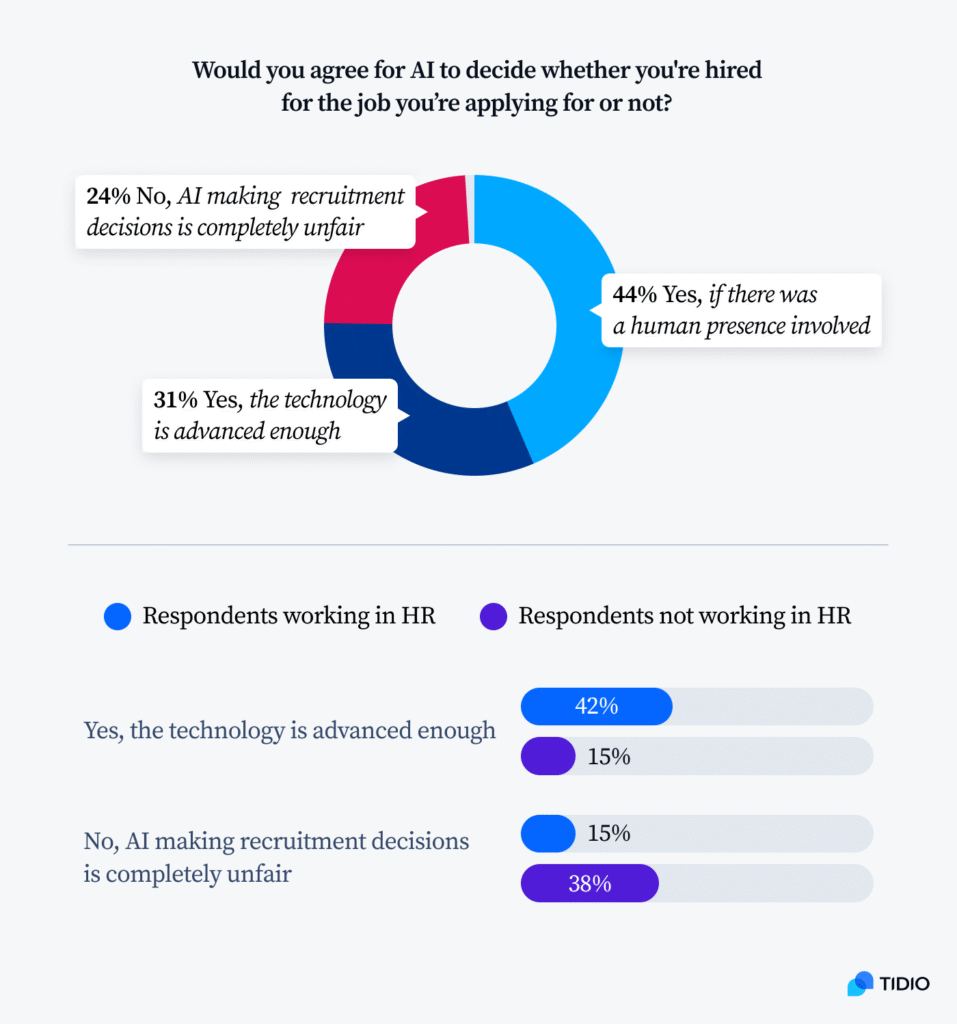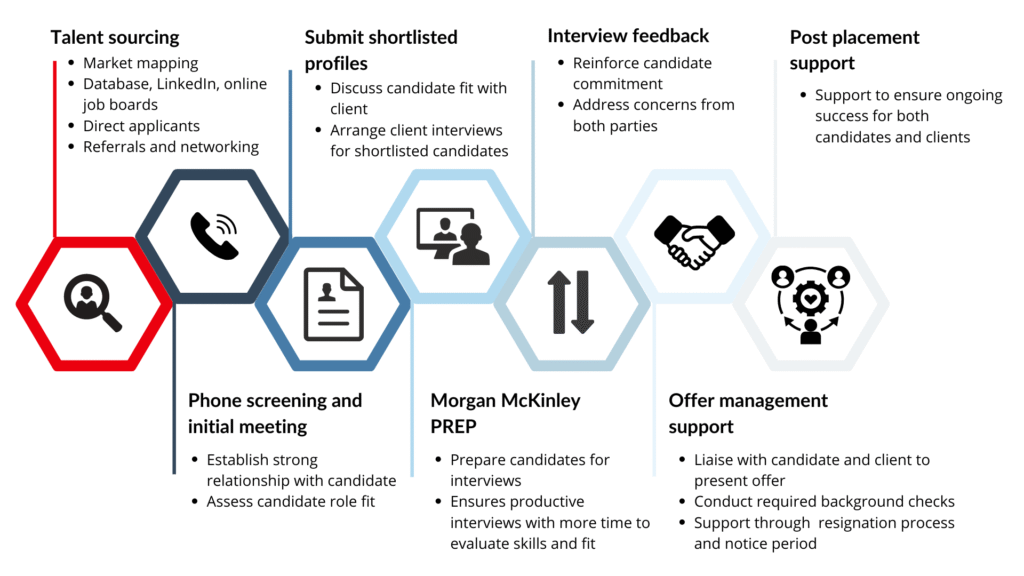By Brianna Rooney
In today’s digitized, data-driven world of talent acquisition, recruitment teams are constantly seeking new ways to enhance candidate experience, increase productivity, and drive results. However, they face an ever-present quandary when it comes to how they can best maintain meaningful human connection and interaction amidst the pull toward process automation and technology.
Striking the right balance between personalized, high-touch recruiting and scalable efficiency is both an art and a science. When done well, it enables organizations to deliver a standout candidate experience while optimizing recruiting operations.
The power of personalization
With any increasingly automated and impersonal process, nothing replaces genuine human connection with candidates. Taking the time to build rapport, make candidates feel truly valued, and provide thoughtful feedback shows that you view them as individuals with unique backgrounds and goals — rather than just another data point.
Small personal touches make a genuine difference throughout the recruiting journey, whether in the form of a handwritten note, informal video chat, or a detailed interview debrief highlighting their core strengths and areas for improvement. Customizing messaging based on a candidate’s specific background also adds a personal element.
While it’s not feasible to thoroughly personalize communication at scale, strategic use of one-on-one outreach at key candidate touchpoints helps build goodwill, trust, and stronger ongoing relationships.
For example, sending personalized messages to targeted candidates when a relevant new opening arises keeps you at the top of their minds, and scheduling informal video chats shows you want to get to know candidates as people. Similarly, proactively reaching out after rejections or close-but-no-hire decisions helps build goodwill and keeps talent network connections warm for future roles.
Overall, this added human element vastly improves the likelihood that candidates will respond positively to outreach, refer others in their network, and view your organization as an employer of choice.
Optimizing through automation
Automating repetitive, high-volume recruiting activities allows organizations to free up recruiter time for higher-level, strategic initiatives that drive results. Many administrative elements of the recruiting process that follow standard playbooks are ripe for automation — such as sourcing, initial screening, scheduling, customer management data entry, and analytics reporting.
Handing these tasks off to technology removes them from recruiters’ plates, allowing them to devote more of their time and energy to value-added activities. However, it’s still important to keep a human presence to avoid any errors or ensure that everyone gets a fair chance.
For example, automation tools can efficiently screen hundreds of applicants against predefined qualifications criteria, allowing recruiters to focus on personalized outreach to the most promising subset of candidates. When used this way, scheduling automation helps reduce the tedious back-and-forth of coordinating calendars.
When assessing recruiting tasks for automation, it’s critical to select user-friendly tools that integrate seamlessly into existing tech stacks and workflows. Additionally, change management and training during implementation are also critical for successful adoption.

Source: https://www.tidio.com/blog/ai-recruitment/
A perfect balance
Of course, completely customized recruiting doesn’t scale when application numbers are high, but an overly automated, impersonal process risks alienating candidates. The solution, therefore, lies somewhere in the middle.
To start, recruiters can develop libraries of tailored outreach templates for email, text, and social media that allow them to efficiently plug in personal customization for each candidate. Then, they can build automation into nurture campaigns segmented by role type, while still empowering one-off personalized communication.
Be sure to set clear expectations with candidates early in the process regarding which elements will be automated for efficiency. When recruiting for highly specialized or executive roles, a higher degree of personalization may be warranted compared to high-volume entry-level hiring. Thoughtfully combining scalable recruitment marketing and process automation with targeted one-on-one personalized interactions enables recruiters to deliver standout candidate experiences efficiently and effectively.
Feedback loops
Achieving the optimal balance between personalization and automation is an ongoing process of feedback loops — not a one-time initiative. This is why recruiters should regularly gather feedback from candidates at different process stages to identify areas where more human interaction is desired.
From there, recruiters can conduct periodic focus groups for qualitative insights, and survey hiring managers to assess satisfaction levels. The process of surveying hiring managers helps recruiters assess their satisfaction levels and perspectives on the quality of candidates they receive.

Source: https://www.morganmckinley.com/recruitment-process#recruitment-process-flowchart
The gathered data serves as your compass, guiding adjustments to the allocation of recruiter time and energy. If feedback indicates candidates crave a more direct interface during interviews, adapt accordingly by continuously monitoring recruiting technology and workflows to reveal where manual interventions add value and where automation can streamline processes. Blend the power of generalized automation for tasks like scheduling with targeted personalization, such as crafting custom interview debriefs.
By embracing this iterative approach, based on a foundation of data and user input, your recruitment strategies can evolve over time. This allows you to fine-tune the balance between personalization and automation until it achieves the perfect equilibrium for your organization’s unique needs.
The road ahead
The future is AI-driven. In the coming years, we will likely see AI enable hyper-personalization at scale through natural language generation platforms that can automate tailored messaging for each candidate automatically. Chatbots and voice bots with stronger capabilities for expressing emotional intelligence will also create personalized candidate interactions at high volumes.
Augmented reality and digital assistants will empower recruiters to focus on relationship-building and the human element of recruiting. Recruiters may engage candidates through AR-enabled video chats, while their digital assistant handles scheduling, data entry, and other repetitive administrative work seamlessly behind the scenes.
Sophisticated predictive analytics will help identify the most effective personalization strategies and process automation opportunities. Predictive models will forecast optimal resource allocation between manual and automated recruiting tasks to drive outcomes.
Leading organizations will achieve an ideal synergy of AI-enabled personalization, digital/AR assistants supporting recruiters, and predictive analytics guiding optimal human-machine collaboration. This will enable efficient, delightful candidate experiences powered by a holistic approach to integrating human insight and technological capabilities.
While cutting-edge technology will continue to advance recruiting, genuine human connection will remain vital. Organizations that can thoughtfully harmonize high-touch personal outreach with high-tech automation will dominate the future of talent acquisition.
Using personalized communication strategically while leveraging technology to handle administrative tasks provides the best of both worlds. With the right balance tailored to an organization’s needs, recruiters can execute an efficient yet human-focused hiring process. The future lies in harmonizing personal connection and scalable efficiency.
Organizations that embrace this integration will unlock sustainable recruiting success in a digitally driven world. The path to success is clear: embrace the art of personalization and automation to craft a brighter future for talent acquisition.
About the Author: Brianna Rooney, CEO of TalentPerch and Thriversity, is a dynamic serial entrepreneur in recruiting. Her vision drove the success of Techees, acquired by Affirm in 2021. As a respected industry leader, she co-hosts Talent Takeover Unfiltered and is a Founding Recruiter on Forbes.jobs.